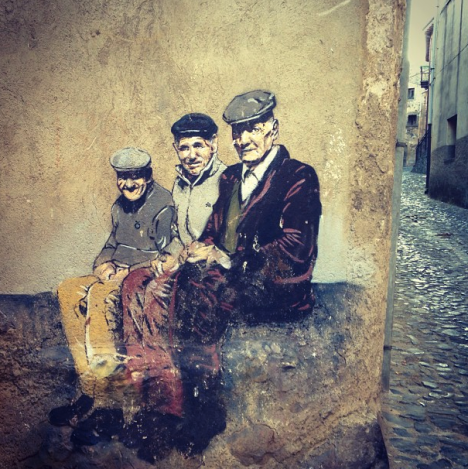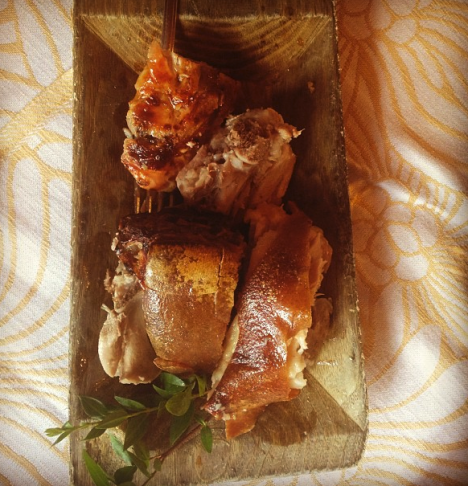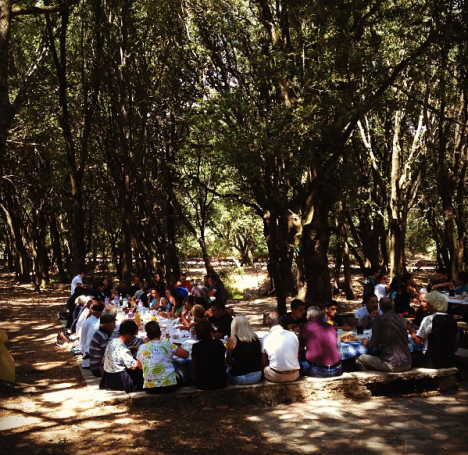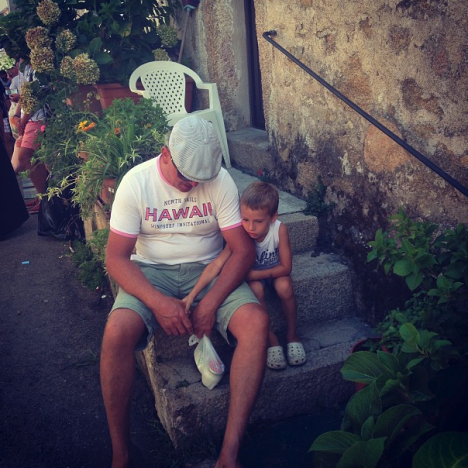You might recall this time last year I visited the Blue Zone in Ikaria, where people live a ludicrously long time. No? Well, I spent six weeks on the rugged Greek island with National Geographic, looking at various factors contributing to their abnormal longevity.

To refresh, I found that pork, wine, walking and eating no sugar all play a role. Now, to complete a bit of a circle, I’ve just left Italian island Sardinia, another of the five Blue Zones (the others are Okinawa in Japan, Nicoya in Costa Rica and Loma Linda in CA) and I’m trying to form a picture of what might be contributing to this freaky phenomenon.
Cop this: on an island of about 1.6 million people, 371 (as of last year) are over the age of 100. It’s accepted as a “thing” that islanders have an expression: A Chent’Annos (“May you live to 100”). I should highlight, though, that the phenomenon here applies in particular to men. Yes! Weirder, still!
Having spoken to a bunch of people in the past three weeks of travelling across the island, including through the isolated and largely unvisited interior where most of the centenarians live, I’ve ascertained a few factors. Pretty much all of them are things I bang on about here on this blog as general wellness advice.
Hills.
Sardinia is rugged and mountainous, as is Ikaria. This has meant to get anywhere the locals – mostly shepherds who had to wander after their stock all day – had to hike. Not just walk, but hike, which adds an extra dimension of robustness to things. I posted my thoughts on hiking and healing yesterday.
The wind.
One Sardinian academic believes the wind adds a certain element to the air here. They also attribute the long-living tendencies to the magnetic fields on the island. Everywhere I went folk mentioned the “energy” of the rocks. I felt it, too, after a while. There’s a calmness to the place, especially up in the mountains.
The isolation.
It’s meant a quirk in the DNA that is linked to longevity (particularly in men) has been maintained over the years.
Pork.
Again, the main source of meat protein here is from pig, more so than other places in Italy. As much as you might think Sardinia is know for its seafood, it’s only a very recent thing that the locals have eaten fish and, um, sardines. Why? People didn’t live close to the sea because it left them vulnerable to attack. All the villages are perched up high on mountains or rocks and pigs and goats were – and still are – farmed. Same with Ikaria. Interesting, hey!?

Fat.
Oh, they love their olive oil here. And their pig lard. Lashings of the stuff.
Eating leftovers.
Sardinians were poor for most of their history. And so their diet is incredibly simple and frugal. Their traditional dishes are about using up leftover pasta, bread, meat and cheese. I’m not quite sure how this feeds back into a long life, but I do think extracting every possible nutrient from a food, and being mindful of consumption would have to keep your body primed.
Two meals a day.
Maybe three. But definitely no snacking. It’s a form of fasting…every day.
No sense of time.
It’s a joke on the island that no one ever wears a watch. It’s wonderful to observe up in the mountains. I got lost hiking in a forest one day. I found my way out onto a road and found some oldies sitting and chatting. I asked directions back to my car. It turned out to be 2 kms away. I wanted to hitch a ride, they wanted to walk with me. “Andiamo,” they cried out. I told them I was in a rush. “Bah,” they cried out. We walked…slowly…and talked in two different languages.

Red wine.
For many centenarians living today, cheese and wine was their staple diet. The interior’s famous Cannonau (a very big hearty and potent red) is said to contain more antioxidants than any other red wine. Most families make their own, containing no preservative. They drink a glass with lunch and dinner.
Stoopin’ in the evenings.
All around the island, from about 7pm, the young converge on the old and sit with them in doorways or take their elders for a stroll. It’s gorgeous to observe. The woman hang together – teens sitting with their grandmothers, chatting or knitting. The men tend to go to the park and sit on a bench and gossip. So much kindness and sense of belonging preserves the soul and the body.

There is certainly an untouched element to Sardinia. But this is the sad bit, which I also witnessed in Ikaria – the longevity phenomena seems to have come to an abrupt halt, even reversed. It’s almost like as soon as money came to the island (which it did about 50 years ago) the locals went from famine to feast, taking on the health consequences that come with abundance. This happens in poor countries when fortunes reverse – they reject the old ways with more vigour than perhaps those in countries that didn’t have it so tough. Young Sardinians are incredibly overweight. And Sardinia has one of the highest incidences of celiac disease, I’m guessing from eating so much bread and pasta where the gluten content has shifted due to the more processed wheat strains available today. And exercise…it’s just not done! All of which saddened me a little. On my various hiking excursions, I’d go an entire day without seeing anyone. Routes were overgrown and locals didn’t seem to know anything about some of the trails I’d researched.
The same was happening in Ikaria, but – and this is the happier bit – I noticed there that as the recession hit, families were turning back to the old ways again. I’m hoping the same will happen in Sardinia where they were certainly suffering from a quieter tourism season.
If you want to follow my Sardinia trip in pictures, check out my Instagram hashtag #worldwanders. I’ll post a bit of a guide in a few days.

